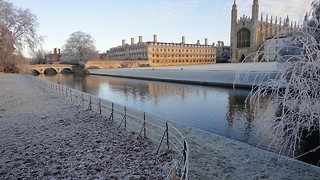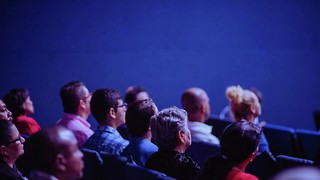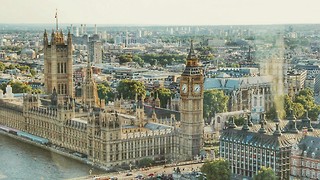‘Making New Worlds’: Li Yuan-chia and Friends at Kettle’s Yard presents an eclectic vision for the future
At the venue’s latest exhibition, Robin Stephens delves into the creative potential of visual clutter
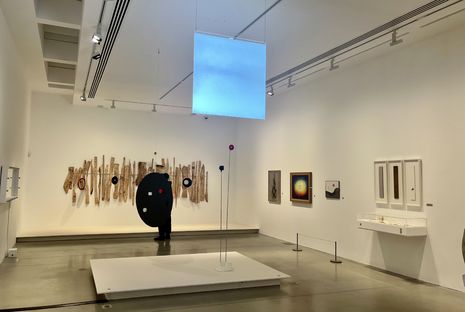
A saucepan, lace curtains and plastic tomatoes are just some of the unusual works on display at the current exhibition at Kettle’s Yard. ‘Making New Worlds: Li Yuan-chia and Friends’ provides a sample of the artworks which resulted from the studio of Li Yuan-chia in Cumbria in the seventies and eighties. Li was a Chinese artist who, after spending time in Italy, Taiwan and London, settled in Cumbria, where he bought a property and set up the LYC Museum and Art Gallery. Much like Kettle’s Yard, this eclectic artists’ space brought together creatives in an environment which encouraged experimentation and resulted in some fascinating artworks, many of which are on display in the exhibition.
“The artwork communicates with us in a language we don’t fully understand.”
The exhibition is presented across three rooms in the contemporary Kettle’s Yard extension. Each room draws upon different themes explored at the LYC Museum. In the first room, Li’s idea of the cosmic point is revealed: a concept of small things within larger systems, referring simultaneously, as the curators put it, ‘to a planet, or to a grain of sand’. The idea of the ‘cosmic point’ is present in each artwork in this room, asking us to consider the formation of the world around us. Many of these cosmic works here seem to be in motion, whether that be through electricity, or by reacting to the airflow in the room, as the many mobile-like artworks spin and sway as you move around them. At the centre of this room, Takis’ ‘Signal Series II’ intermittently sends out pulses of light through the doorway, evoking shipping signals, or morse code; the artwork communicates with us in a language we don’t fully understand.
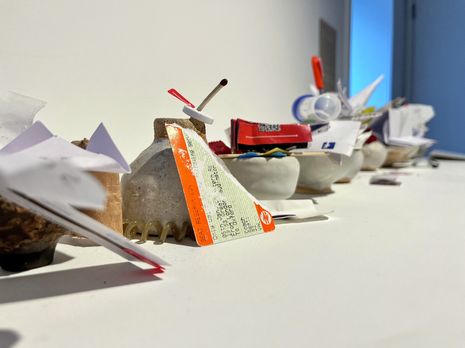
The technological theme dissipates slightly in the second room, and is replaced by something more natural. In the middle of this room a low plinth covered in rough-looking earthen bowls and precisely arranged ceramic sticks acts almost as an archaeological finds table, encouraging us to dig through the rest of the seventy or so objects in this busy room. There are artworks hung from floor to ceiling, recalling similar displays throughout Kettle’s Yard’s many, unforgettable rooms with valuable works hung perilously close to foot height. The parallels between this room and the house do not end here, as some works in this room have been taken from the house itself, including Ovidiu Maitec’s ‘Radar 2’—a carved piece of walnut resembling a radar antennae, uniting the natural and the technological. In fact, this whole room feels like the house, with a mass of eclectic objects displayed very much from floor to ceiling. The Edes collected natural objects such as stones and presented them with the same respect as they did a work by some of the most eminent artists of their time. This room similarly curates pebbles and chunks of wood and shows us the importance of nature to both the Edes and Li.
“At the heart of this exhibition is a kind of optimism”
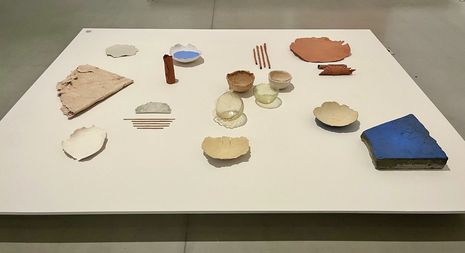
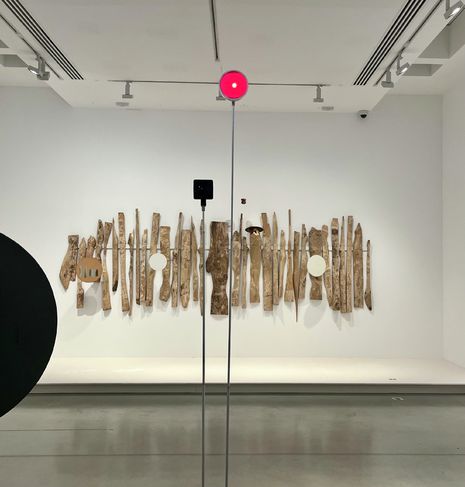
Upstairs, the exhibition moves into a more interactive room with works by contemporary artists, all replicating some kind of typical household object, but adding a hidden dimension. On a side wall, for example, a long kitchen cabinet reveals a surreal culinary world of art, including a video work projected into a frying pan. Adjacent to this, is a fascinating interactive work comprising a series of small bowls and vases, intended for visitors to leave offerings in. Providing a glimpse into the lives of those who visit Kettle’s Yard through their pockets, the bowls are piled high with cinema tickets, pen lids, foreign currencies, a polo mint and a second-class stamp. This domestic room, with its artist-made lace curtains, reminds us once again of just how appropriate of a location Kettle’s Yard, famous for its art gallery-cum-home, is for such an exhibition.
At the heart of this exhibition is a kind of optimism. Across the rooms, we are invited to consider a wide range of objects, all linked to both Kettle’s Yard and Li’s way of doing things differently. The exhibition lives up to its title, ‘Making New Worlds’, and certainly encourages us to do so too. In an age of technological anxiety and climate crisis, ′Making New Worlds’ suggests a hopeful hybrid of technology and nature, as it dawns on us that the wonder of each room and display case is the unity between the two, a rare heartening gallery experience which suggests a new way forward—a new world.
‘Making New Worlds: Li Yuan-chia and Friends’ is open at Kettle’s Yard until February 18th. Free entry.
 Comment / Anti-trans societies won’t make women safer14 November 2025
Comment / Anti-trans societies won’t make women safer14 November 2025 News / Controversial women’s society receives over £13,000 in donations14 November 2025
News / Controversial women’s society receives over £13,000 in donations14 November 2025 Comment / Be mindful of non-students in your societies12 November 2025
Comment / Be mindful of non-students in your societies12 November 2025 News / Stolen plate returned to Caius after 115 years12 November 2025
News / Stolen plate returned to Caius after 115 years12 November 2025 Theatre / The sultry illusions and shattered selves of A Streetcar Named Desire13 November 2025
Theatre / The sultry illusions and shattered selves of A Streetcar Named Desire13 November 2025








